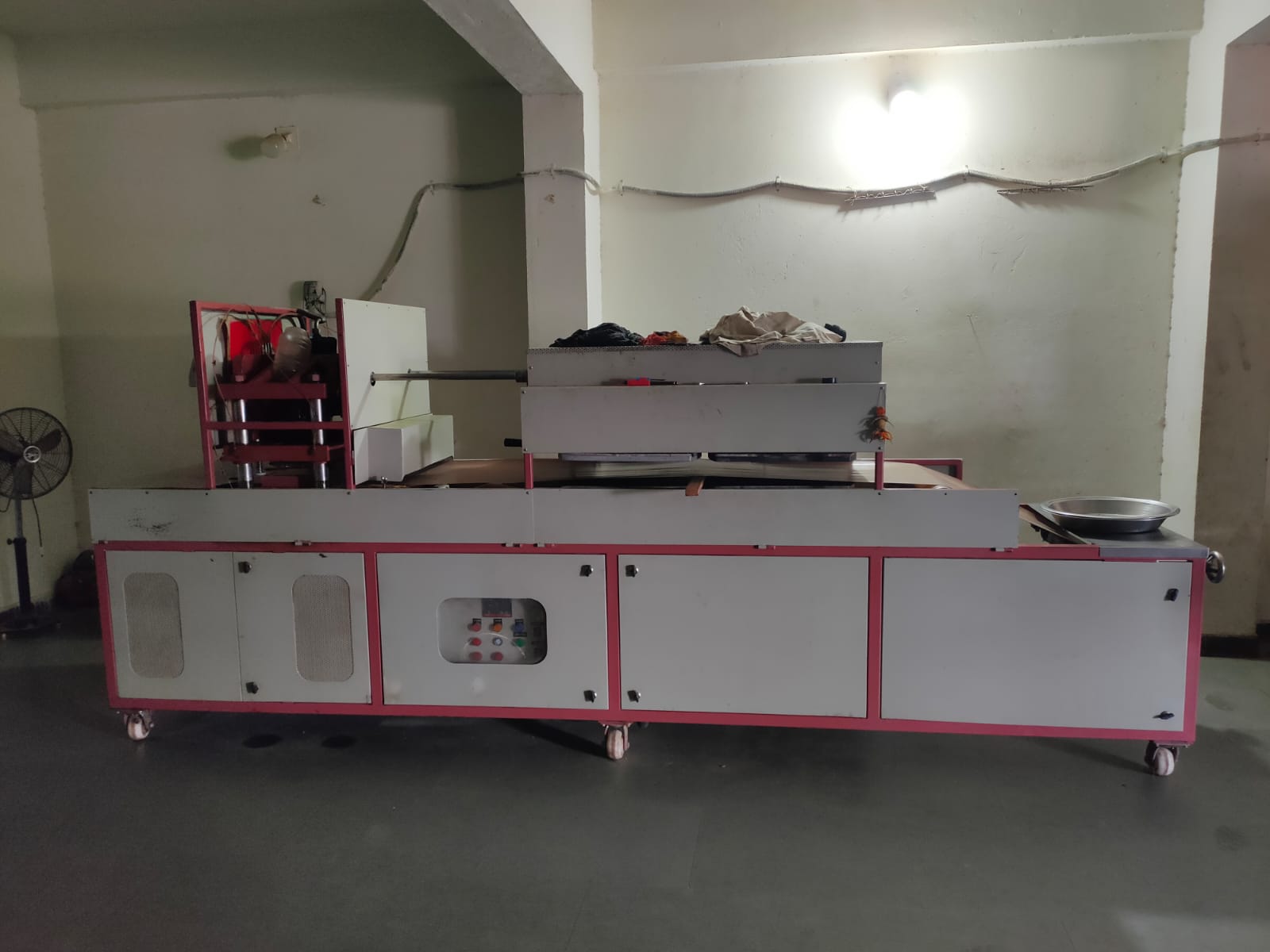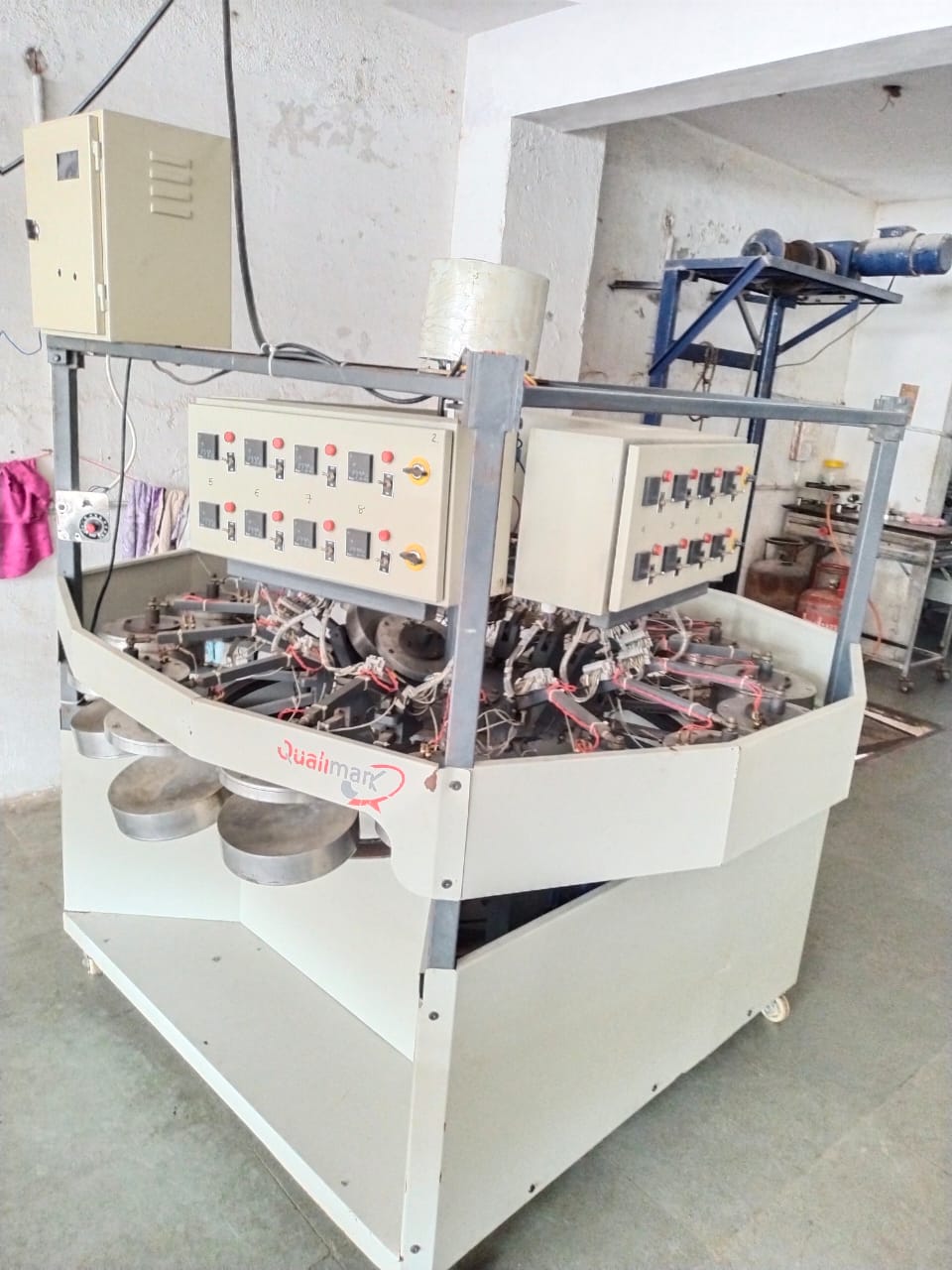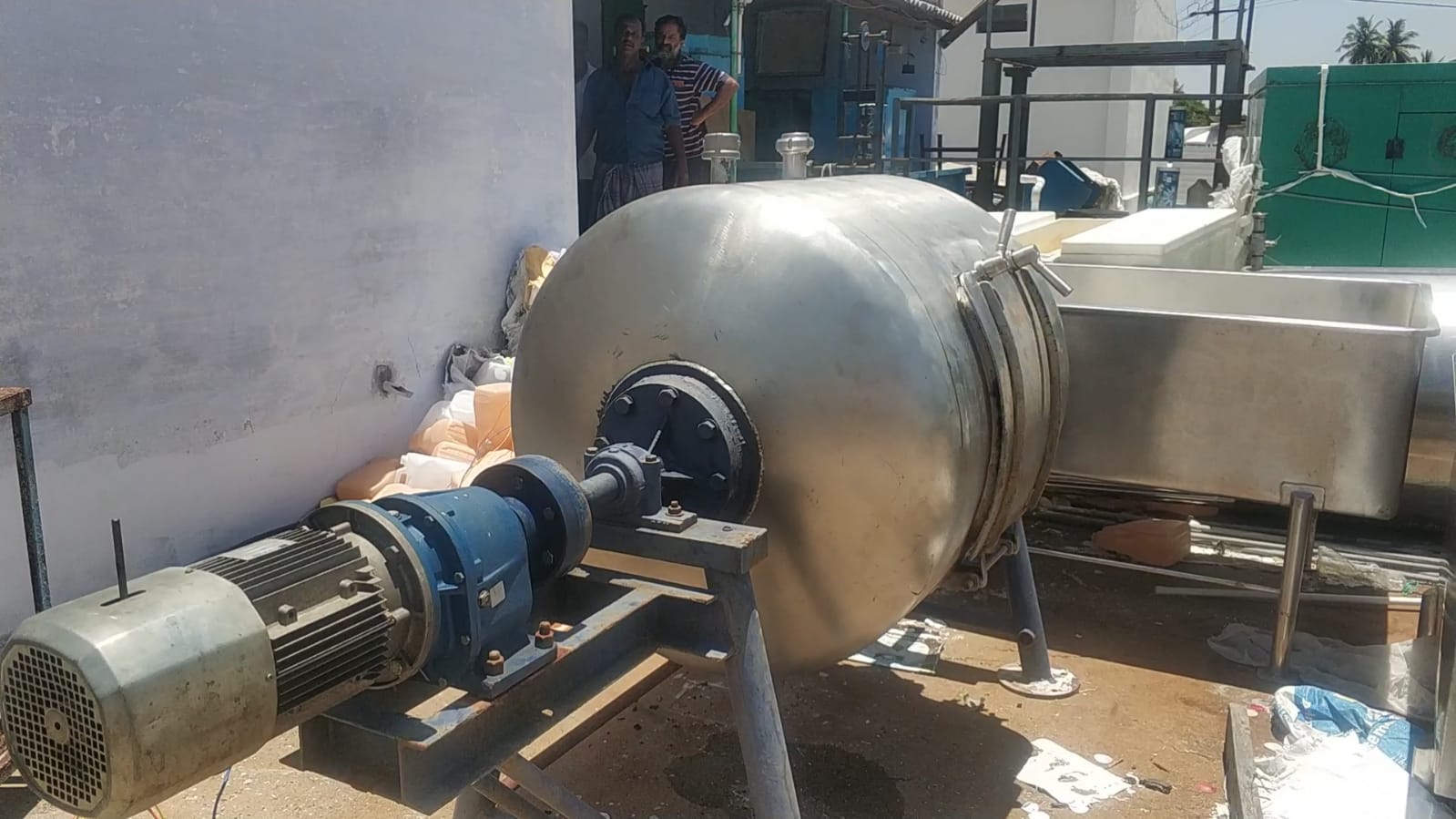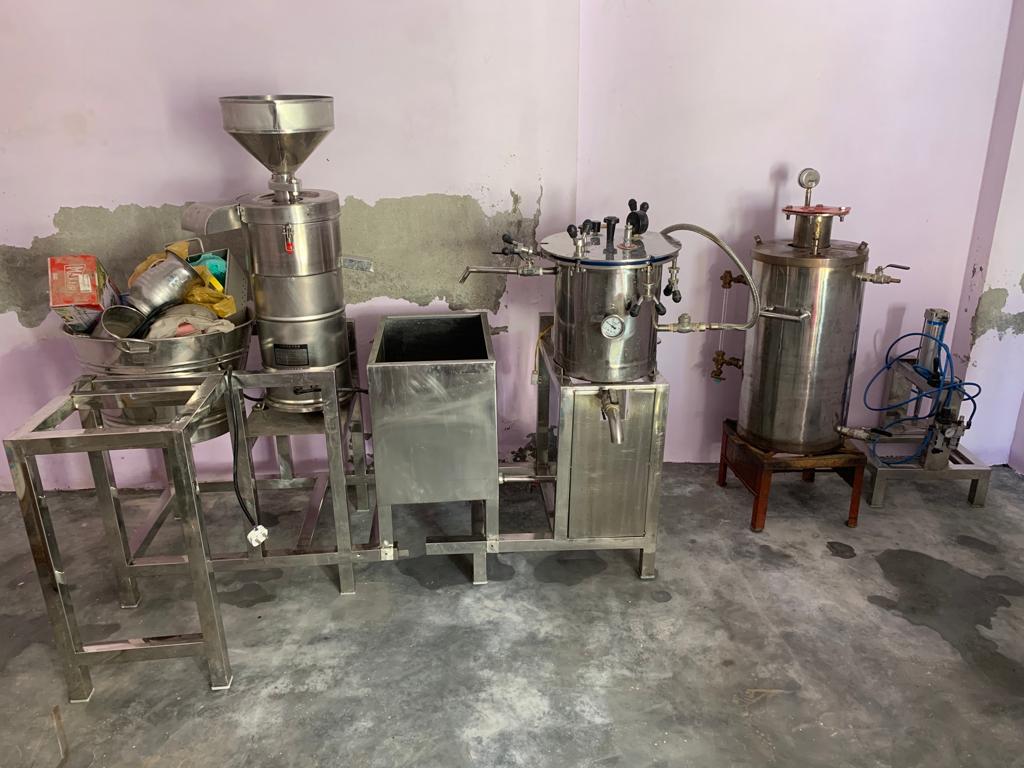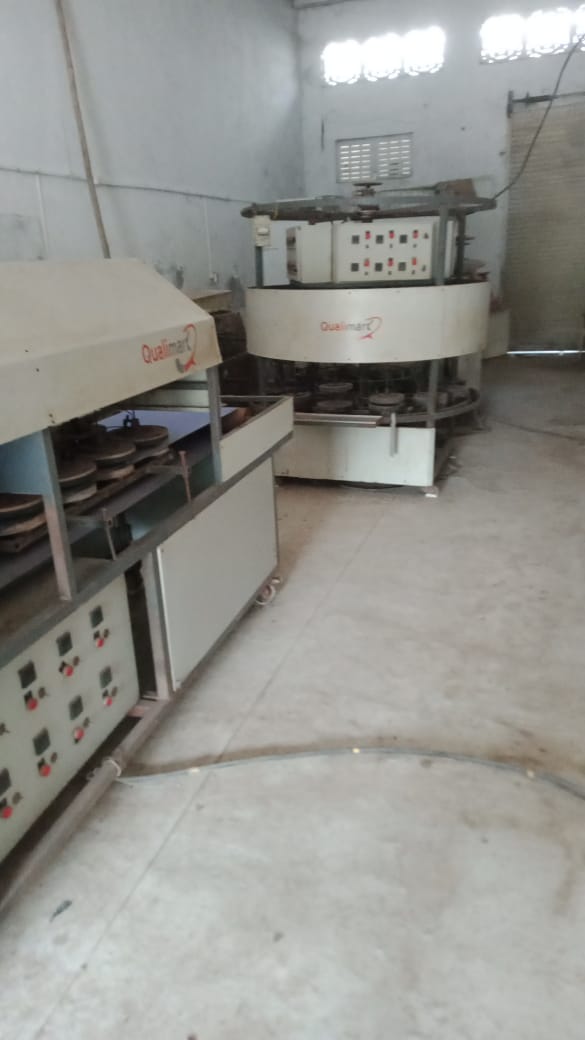This is a Roti Making Machine.
Material : Stainless Steel
Voltage : 220 V
Capacity : 900-1000 Roti per hour
Power : 1 kW
Dimension : 2 x 1.8x 1.7 feet
Chapati Thickness : 1- 2.5 mm
Material Grade : SS 304
A roti making machine, also known as an automatic roti maker or chapati maker, is a kitchen appliance designed to automate the process of making rotis or chapatis, which are popular Indian breads. These machines are designed to save time and effort in the kitchen, especially for those who need to make rotis in large quantities.
A typical roti making machine consists of a compact unit with a built-in dough kneader and a pressing mechanism. Here’s a general overview of how these machines work:
- Dough Preparation: The machine typically has a dough kneading compartment where you can add the required ingredients, such as flour, water, and any additional seasonings or oils. The machine’s kneading mechanism mixes and kneads the dough to the desired consistency.
- Dough Resting: After the kneading process, the dough is allowed to rest for a brief period to ensure proper gluten formation.
- Dough Portioning: The rested dough is divided into smaller portions, usually using an automatic portioning mechanism. This helps in creating evenly sized dough balls for each roti.
- Pressing and Cooking: The dough ball is placed on a non-stick surface or a heated plate within the machine. The pressing mechanism, often consisting of heated plates or rollers, flattens the dough ball into a round shape. Simultaneously, the machine applies heat to cook the roti on both sides.
- Puffing: Some advanced roti makers have a mechanism to puff up the roti, similar to the traditional method where it is placed directly on a flame. This puffing process creates a light and airy texture in the roti.
- Ejection: Once the roti is cooked, it is automatically ejected from the machine, ready to be served or stored.
It’s important to note that different models of roti making machines may have variations in their features and functionalities. Some machines offer adjustable settings for dough thickness, cooking time, and temperature, allowing you to customize the rotis according to your preferences.
Roti making machines can be a convenient addition to the kitchen, especially for individuals or families who frequently consume rotis or need to prepare them in large quantities. However, it’s always a good idea to read the user manual and follow the manufacturer’s instructions for safe and efficient usage of the machine
Its in a good working condition.
It has been recently serviced







